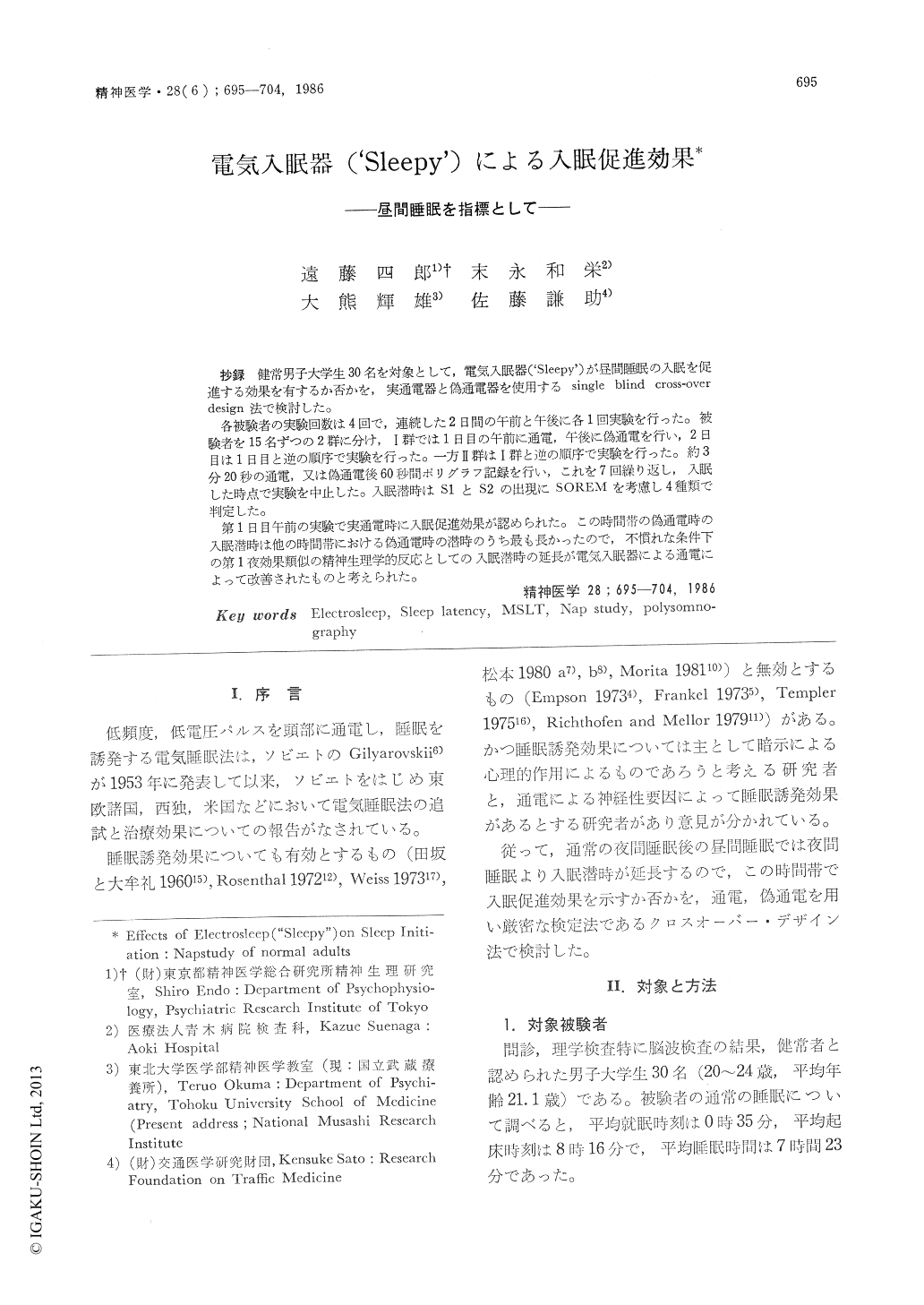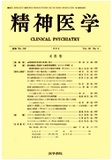Japanese
English
- 有料閲覧
- Abstract 文献概要
- 1ページ目 Look Inside
抄録 健常男子大学生30名を対象として,電気入眠器(‘Sleepy’)が昼間睡眠の入眠を促進する効果を有するか否かを,実通電器と偽通電器を使用するsingle blind cross-over design法で検討した。
各被験者の実験回数は4回で,連続した2日間の午前と午後に各1回実験を行った。被験者を15名ずつの2群に分け,1群では1日目の午前に通電,午後に偽通電を行い,2日目は1日目と逆の順序で実験を行った。一方II群はI群と逆の順序で実験を行った。約3分20秒の通電,又は偽通電後60秒間ポリグラフ記録を行い,これを7回繰り返し,入眠した時点で実験を中止した。入眠潜時はS1とS2の出現にSOREMを考慮し4種類で判定した。
第1日目午前の実験で実通電時に入眠促進効果が認められた。この時間帯の偽通電時の入眠潜時は他の時間帯における偽通電時の潜時のうち最も長かったので,不慣れな条件下の第1夜効果類似の精神生理学的反応としての入眠潜時の延長が電気入眠器による通電によって改善されたものと考えられた。
In general, daytime naps after usual nocturnal sleep have delayed sleep onset time compared with sleep onset time in nocturnal sleep. The present study was designed to clarify whether or not electrosleep ("sleepy") has effects on sleep latency during daytime naps by using single cross-over design applying actual stimulation (A) and pseudo-stimulation (B).
Thirty male subjects aged 20-24 years were studied. Mean time in bed at home was 7 hr 23 min. (00 : 35-08 : 13). Each subject has total 4 experiments consisting of morning and afternoon nap studies for two consecutive days. Morning nap of the 1st day started at 9 : 00 and finished at 11 : 00 (11) and afternoon nap started at 13 : 30 andfinished at 15 : 30 (12). Morning (21) and afternoon nap (22) of the 2nd day were studied at the same time zones as the 1st day. Electrical stimulation was applied through the electrodes on the frontal (positive) and occipital regions (negative). After subjects went to bed and the light was turned off, base line PSGs were recorded for 60 sec., actual electrical stimulation or pseudostimulation applied to the subjects for 200 sec. PSGs were recorded for 60 sec. between stimulations, and if PSGs for three consecutive intervals were composed of stage 2 sleep, the experiments were discontinued.
There was a significant difference between sleep latencies using actual electrical stimulation and pseudostimulation with shortening of sleep latency using actual stimulation in the morning trial on the 1st day than that of pseudostimulation. That is, mean sleep latency of morning nap in the 1st day with actual stimulation (Al 1) was significantly lower than that with pseudostimulation (Bl 1) (p < 0.01). The mechanism of effects of electrosleep on daytime nap was discussed in relation to MSLT and psychophysiological response.

Copyright © 1986, Igaku-Shoin Ltd. All rights reserved.


